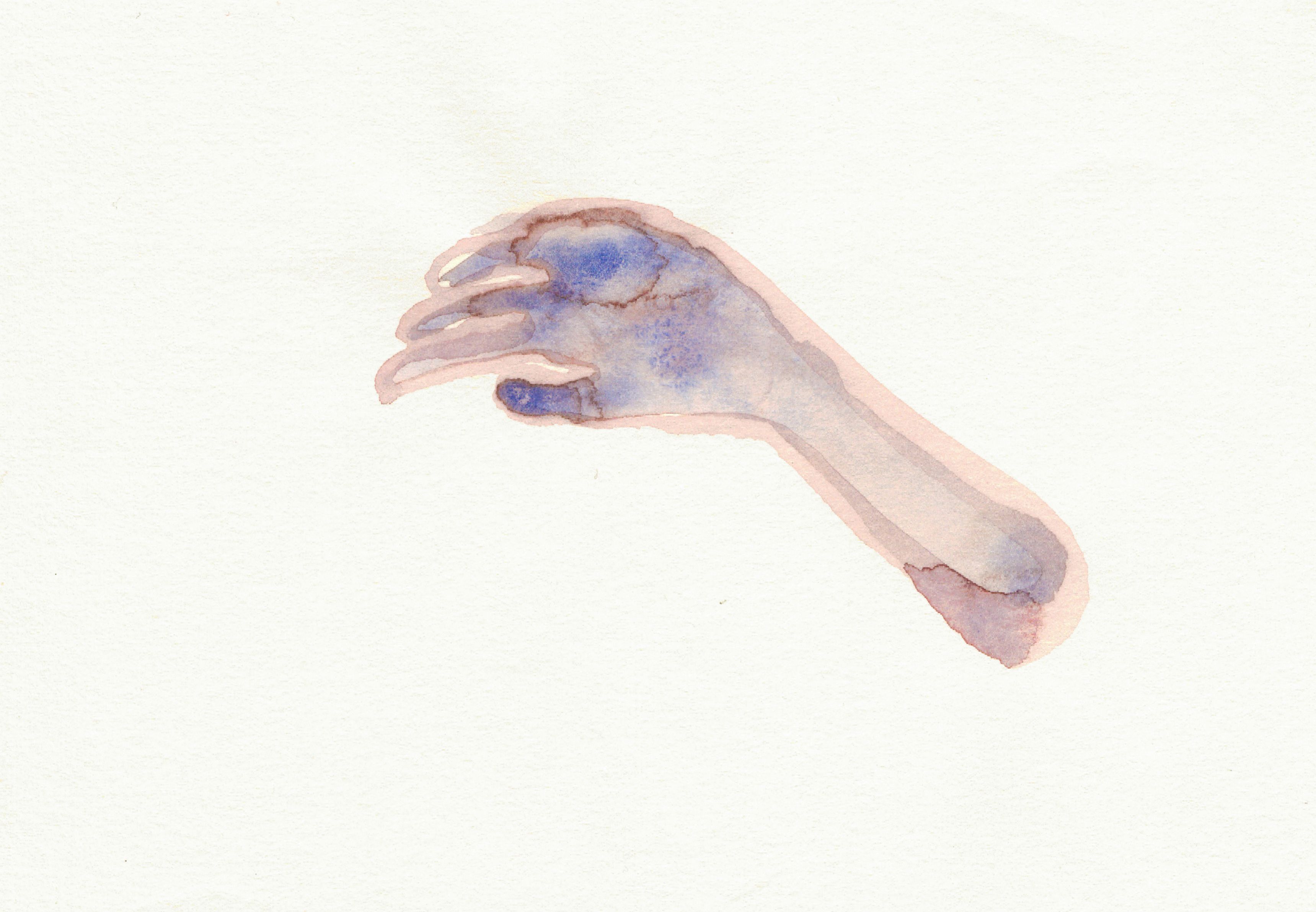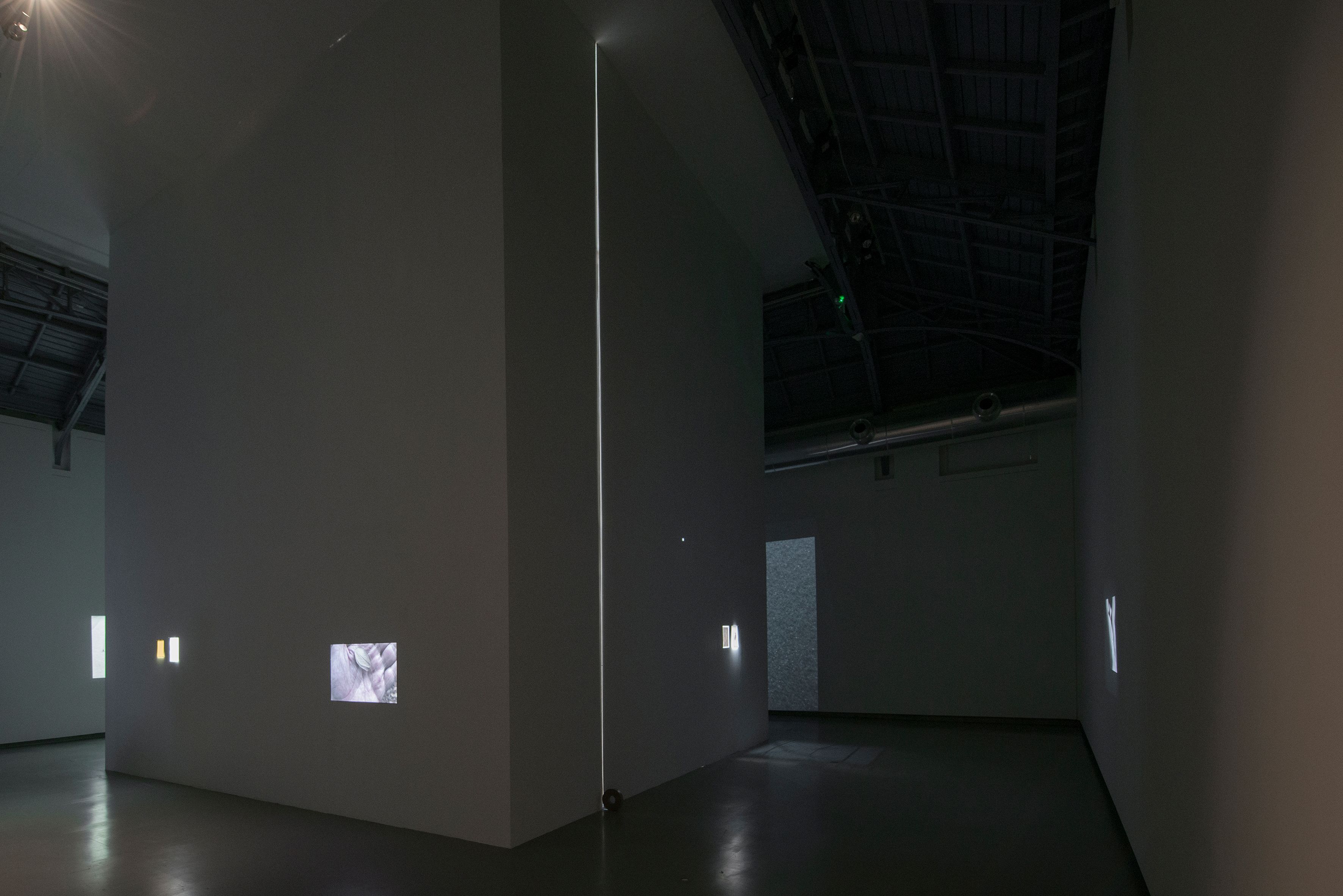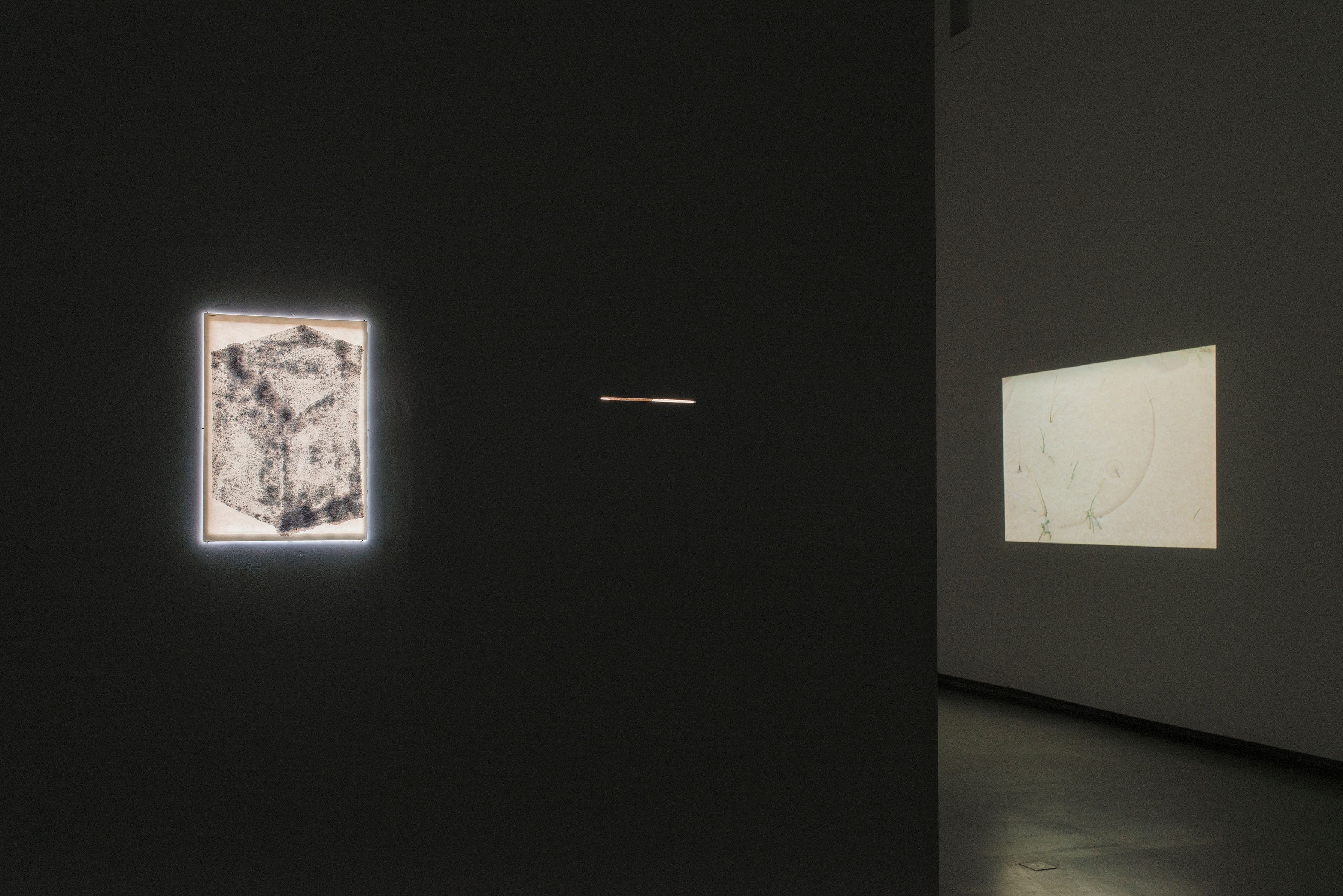Precise and impalpable in equal measure
Guillaume Désanges
Journal de la Verrière
As part of the monographic exhibition Barely placed gestures in a turbulent landscape
La Verrière, Brussels
2018
Link to the exhibition Barely placed gestures in a turbulent landscape
Text / pdf / French / English

Since the late 2000s, Franco-Tunisian artist Ismaïl Bahri has developed a body of work based on minimal situations and gestures whose inexorable logic ultimately generates a kind of magic, a state of grace captured in the essence of his materials. Balling and smoothing out the pages of magazines, until the ink has transferred completely from the paper to the hands, gradually obliterating the printed image ¹. Stretching an invisible thread, materialized only by the droplets running along its length, which gradually form a puddle of water in the exhibition space ². Filming a clear droplet of water on a wrist, its barely perceptible tremors revealing the pulse of the arteries beneath the skin ³. A white screen divided by a trembling, vertical black line that gradually reveals itself as a ball of thread being unrolled against a backdrop of snow ⁴. A journey through an urban landscape, represented by its reflection filmed in a glass of ink ⁵, or the white of a piece of paper placed in front the camera lens ⁶. Gestures that pay heightened attention to fine detail, and to the accidents and minute variations generated by unplanned events in the real world. In his work as a whole, and in the detail of individual pieces, Ismaïl Bahri’s practice enacts a gradual process of insistent investigation and revelation of his motifs, based on elementary experimental conditions; formal resolutions over time, based on the principle of photographic development. Emulsion, capillarisation, unravelling, denuding: often, very little stands between the work’s subtle materiality, and its de-materialisation. But the radical simplicity of Bahri’s protocols emanates a quiet, underlying emotion, too: a mixture of surprise and anxiety – a clue, perhaps, to the hidden agenda of his work.


Invited by La Verrière to present his first solo exhibition in Belgium, Ismaïl Bahri has devised an ambitious project that transforms the architectural space into a kind of optical instrument, interacting with the play of light and shade, discovery and concealment, as revealed in the building’s interior, or entering from outside. The aim is to exploit La Verrière’s essential energy – chiefly, its light – while at the same time concealing its source. The installation combines two kinds of projected imagery: digital, and natural. Projections of forms, objects and drawings, but also shafts of natural light, accompany videos screened using an overhead projector. The environment brings together recent works, including some created for the installation, drawing on observations and experiments centred around storms, wind and chaos – disruptive natural states that ultimately form fleeting, more or less orderly visions.
Ismaïl Bahri’s work is presented as part of the current Ballistic Poetry season at La Verrière, examining the disconnect between the defining programme of specific works of art, and their impact or effect – in other words, between intention and intuition or perception in certain programmatic, conceptual artistic practices. Bahri’s work seems to me to go to the heart of these issues, and to apply them in his own, unique way. As such, based on arbitrary but rigorously applied protocols, Bahri’s work springs from an initial, intuitive experiment conducted by the artist over an extended time-frame and in a circumscribed space, with no fixed horizon, which is another way of saying that the experiment is conducted with no specific intent or projected outcome as to the form(s) that may result. Through this subtle interplay of unpredictability and control, the artist delegates his creative authority to chance, or the wind, to fortuitous encounters or the prevailing light, in other words to contingent situations that are created more or less ‘blindly’. In the context of this implacable logic of chance, control resides solely in a fierce refusal to fix or freeze the work’s inherent possibilities. At the same time, the forces at play are focussed on preserving the viewer’s passivity. Paradoxical? Ismaïl Bahri’s art is a rare homage to the invisible energy of the static intercessor. The tensions at work within each piece are the source of its fragility and power alike: two manifestations of the same sustained attentiveness to the world of materials and things, through clearly defined, evident forms which, in this context, we might call ‘poetry’. Direct, raw poetry, of almost transparent clarity, but notable for its refusal to signify. In effect, the work remains open to endless appropriation and interpretation: a kind of non-negotiable polysemy. But in its determination to eliminate facile external references, and to assert its distance from any readily identifiable geographical, cultural or political context, it nonetheless resonates with much of the trouble and tumult in this world. The forms which manifest themselves gradually to our senses and intellect are precise and impalpable in equal measure.